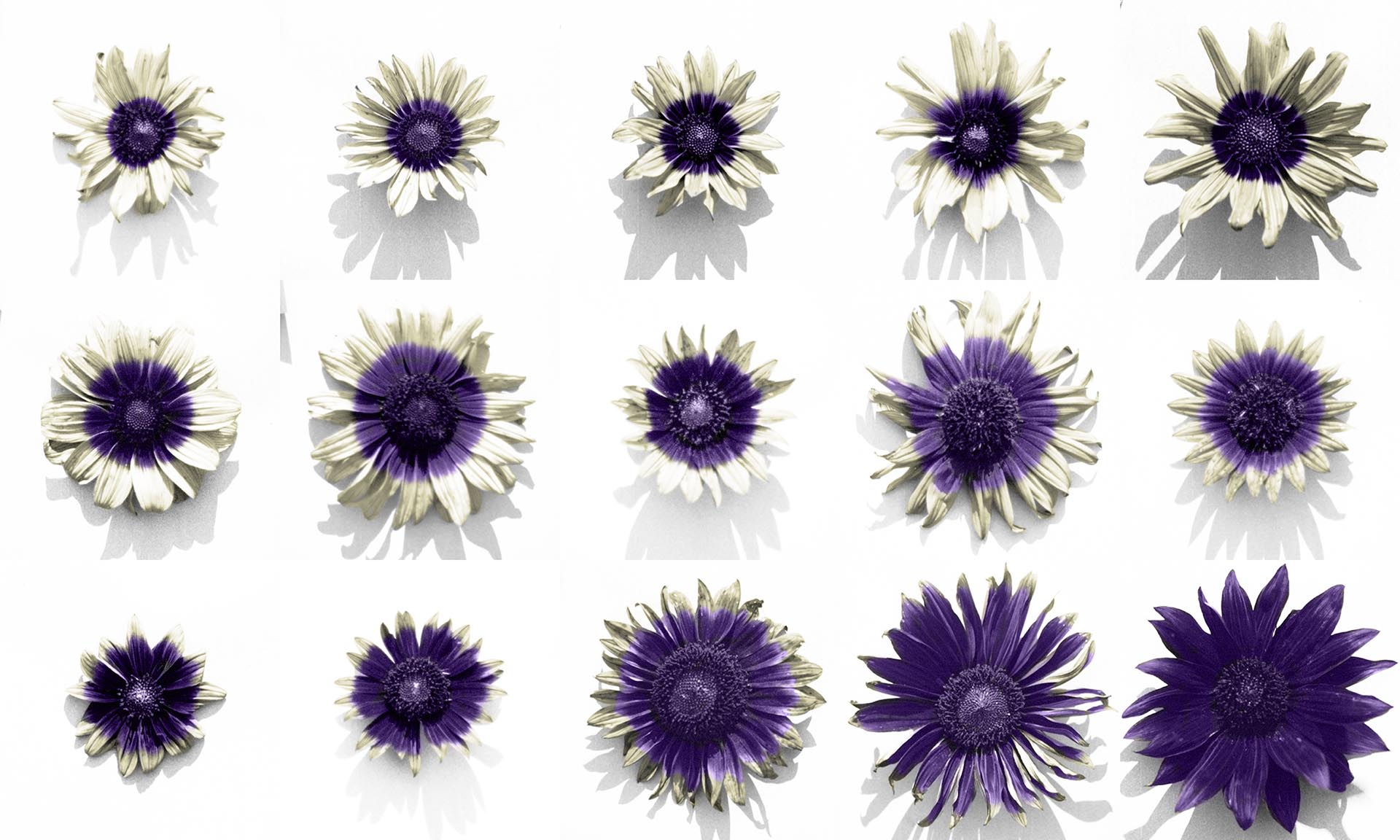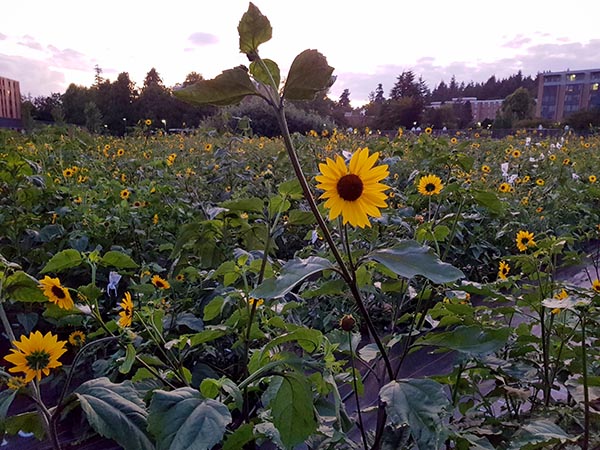It turns out sunflowers are more than just a pretty face: the ultraviolet colours of their flowers not only attract pollinators, but also help the plant regulate water loss, according to new UBC research.

Sunflowers with UV bullseyes in false colour. Credit: Marco Todesco
The researchers found that a single gene, HaMYB111, was responsible for most of the diversity in floral UV patterns. This gene controls the production of UV-absorbing flavonol compounds, which are also known to help plants survive under different environmental stresses like drought or extreme temperatures. Larger floral UV patterns that have more of these compounds could help reduce the amount of evaporation from a sunflower in environments with lower humidity, preventing excessive water loss. In humid, hot environments, smaller UV patterns would instead promote this evaporation, keeping the plant cool and avoiding overheating, the authors say.
“Floral UV patterns appear therefore to play at least a dual role in adaptation; besides their well-known effect on enhancing pollination, they also regulate water loss from flowers,” says senior author Dr. Loren Rieseberg (he/him), a professor in the department of botany and the biodiversity research centre. “That’s not something you would necessarily expect a flower colour to do, and it exemplifies the complexity and efficiency of adaptation – solving two problems with a single trait.”
Sunflowers are cultivated for various purposes, including sunflower oil production, a roughly US$20 billion dollar industry in 2020. This research could help add to knowledge about how to attract pollinators, potentially increasing crop yields, says Dr. Todesco. “This work also helps us understand how sunflowers, and potentially other plants, better adapt to different areas or temperatures, which could be important in a warming climate.”
The researchers also want to better understand how HaMYB111 regulates the size of UV bullseyes, and examine in more detail how those patterns affect plant physiology as well as investigate how exactly flavonol compounds affect water loss.
Story originally published by UBC Media Relations (Alex Walls), January 18, 2022

